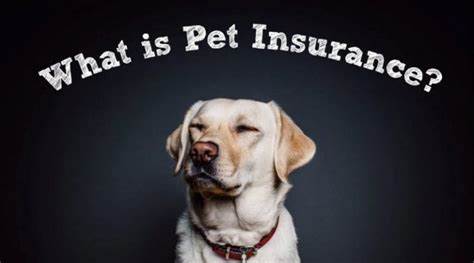What is Pet Insurance?
Pet insurance provides health care coverage for family-owned pets, primarily dogs and cats. Pets are legally considered personal property and pet insurance is classified and regulated as property and casualty insurance. Similarly, human health insurance with annual coverage offered at an actuarially determined rate subject to various conditions and exclusions.
Typically, pet insurance works on a reimbursement basis, meaning that policyholders will be required to submit veterinarian bills to the insurance company for reimbursement. Pet insurance policies help cover unexpected veterinarian visits and may cover accidents,
illnesses, emergencies, surgeries, and prescriptions, but many do not include routine and preventive care. Instead, pet wellness plans cover routine care, such as annual examinations, vaccinations, and dental care.
The National Association of Insurance Commissioners (NAIC) adopted a model law related to pet insurance in 2022. The model law addresses pet wellness programs, preexisting conditions, consumer protections, and training for insurance producers. Washington does not have laws or rules specific to regulating pet insurance products.

New Pet Insurance Law
In 2023, the Washington State Legislature passed SB 5319: Requirements for selling and issuing pet insurance policies in Washington. They are similar to those in the model law adopted by the NAIC.
Existing provisions of the pet insurance laws that preceded SB 5319 not in conflict, still apply. In addition, except specific provisions for pet insurance supersede any general insurance laws. The new Statute also defines chronic condition, congenital anomaly or congenital disorder, hereditary disorder, orthopedic, pet insurance, preexisting condition, renewal, veterinarian, veterinary expenses, waiting period, and wellness program. If a pet insurer uses these terms in a pet insurance policy, the pet insurer must use the definitions set forth in law, and include the definition in the insurance policy and on their website.
In addition to other insurance disclosure requirements, a pet insurer transacting pet insurance must disclose to consumers:
- if the policy excludes coverage due to a preexisting condition, a hereditary disorder, a congenital anomaly or a congenital disorder, or a chronic condition;
- any policy provision that limits coverage through a waiting or affiliation period, a deductible, coinsurance, or an annual or lifetime policy limit;
- whether coverage can be reduced or premiums increased based on the insured’s claim history, the age of the insured pet, or a change in the insured’s geographic location;
- if the underwriting company differs from the brand name used to market and sell the product;
- if a medical examination by a licensed veterinarian is required to effectuate coverage, the required aspects of the examination, and that the exam may document preexisting conditions; and
- any required waiting periods.
If the policy excludes coverage due to any other exclusion, the following statement must be included in the disclosure: “Other exclusions may apply. Please refer to the exclusions section of the policy for more information.” . . .
Numerous other disclosures, notifications, and marketing restrictions apply through the new statute. Be sure to meet with experienced insurance attorneys like Althauser Rayan Abbarno if you have additional questions.
Stay Involved
Stay involved in the Legislative Process.
Contact Experienced Attorneys
For a consultation with an Althauser Rayan Abbarno attorney in Centralia or Olympia, visit CentraliaLaw.com or call (360) 736-1301.

Recent Comments